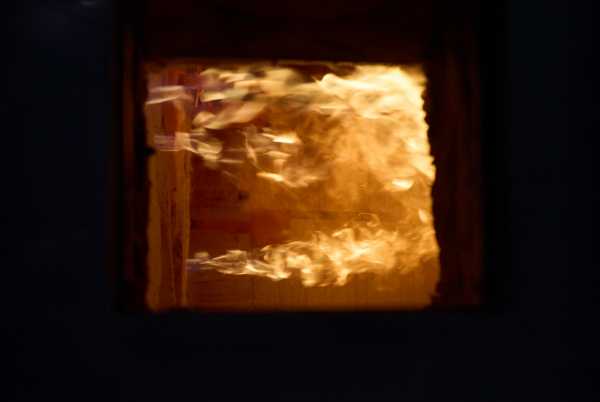Timber construction is undergoing a renaissance in Switzerland. ETH researchers at the Hönggerberg campus are using a fire simulator to test timber components for the construction of buildings of all sizes. The custom-built oven permits simulations of realistic fire scenarios.
Not all building fires develop in the same way. The flammable material catches fire, the temperature rises, and the fire grows and spreads. The compartment size and properties, the fire load, the temperature, and the oxygen concentration in the burning room influence its development. The most recent acquisition of the Institute of Structural Engineering in the Department of Civil, Environmental and Geomatic Engineering at ETH Zurich is intended to show how timber structures behave in different fire scenarios. The insights gained from this will help to expand the potential applications of timber as a safe and sustainable construction material.
Precisely simulating fire scenarios
Including building renovation measures, the oven developed especially for fire simulations costs around CHF 2.5 million, looks robust, and is housed in the heating building of the Hönggerberg campus. It comprises a metal cube reinforced with steel girders with a combustion chamber that is one metre high, one metre wide, and almost 1.7 metres long. The fire simulator is controlled by ten gas burners attached in equal halves to the two long sides. They can heat the oven up to over 1,400 degrees Celsius. The tests are recorded with several cameras outside the combustion chamber, and the composition of the combustion gases can also be analysed.
"We can program the oven's temperature precisely to three degrees and do the same with the oxygen in the furnace," explains Andrea Frangi proudly. The timber components and other common construction materials can also be encumbered with up to 50 tonnes during the test. The Professor for Timber Structures initiated the procurement of the fire simulator and was involved in determining its specifications. "The furnace allows us to simulate various fire scenarios and study their impact on the timber structures."
Timber is a sustainable and safe construction material
Timber construction is booming in Switzerland, and the buildings are growing. Timber high-rise buildings ranging from 75 to 108 metres in height are currently planned or already under construction in Regensdorf, Zug, Winterthur, and Zurich. The fact that this is at all possible is also due to research work spanning decades, such as that carried out by Frangi's group with the fire simulator. New construction products and technologies for connecting timber components also facilitate increasingly larger and unusual constructions.
Prior to 2004, only two-story buildings with timber structures were permitted in Switzerland. From 2005 the threshold was raised to six stories, and since 2015 there has effectively no longer been an upper limit. "The planned high-rise buildings are undoubtedly flagship projects," says Frangi. "However, timber has long established itself as a construction material for buildings of medium height and is attractive due to its good price-performance ratio, sustainability, and safety." The latter may come as a surprise, but while steel beams can deform and accordingly become unstable in the event of a fire, timber constructions can retain their structural integrity for longer.
The load-bearing capacity of a timber beam in the event of a fire is fundamentally determined by its size. If the beam burns, around four centimetres per hour, are converted from wood to charcoal on the sides exposed to the fire. Potential weak points are connecting elements and constructional details. To expand the potential applications of modern timber construction, Andrea Frangi and his team wish to investigate further the combustion behaviour of structural timber elements and connections under realistic conditions. "The construction sector causes a large share of climate-damaging emissions. With our research, we can help to ensure that even more of the renewable and CO2-saving resource timber is used as a construction material," says Frangi.











